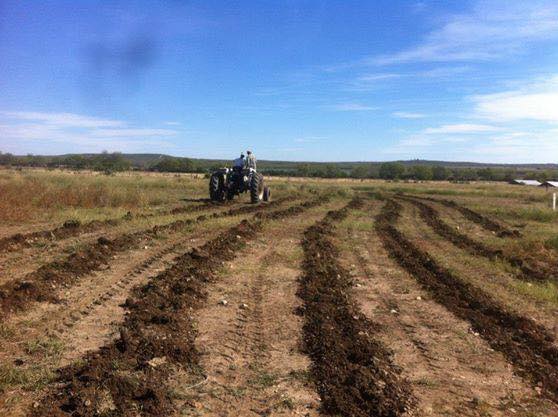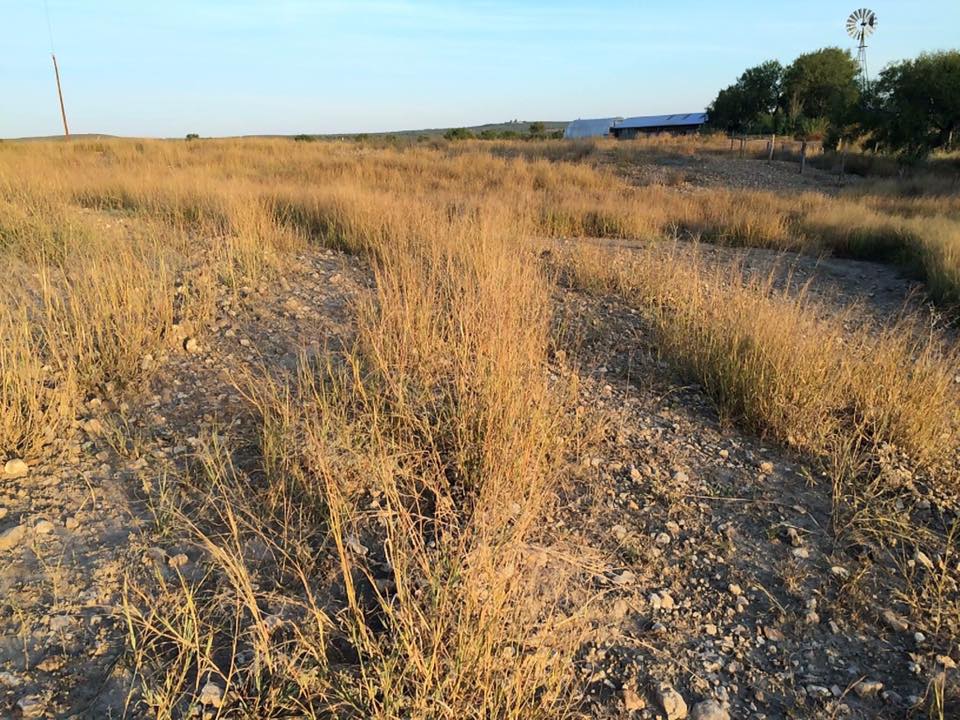Soil & Water
Check out our Ecological Verification page to see the scientific results of our practices.
Adaptive Multi-paddock (AMP) Grazing
We are a working ranch with livestock. The biggest change with the biggest impact that anyone within that same context can make is how they manage their livestock. I would wager that over the past 100 years, hundreds of millions of acres of land globally have been degraded due to livestock production. There is a way to manage and graze livestock without degrading the landscape, in fact it can regenerate landscapes. It’s called holistic planned grazing. Recent research has yielded incredible results from adaptive multi-paddock grazing such as increased soil carbon, biodiversity, water infiltration and other ecosystem functions we have yet to study.
In 2010 I went to a grazing workshop in Boerne, Texas hosted by Holistic Management International and lead by Ian Mitchell-innes, one of the early great thinkers within the holistic grazing world. I had read several books at that time about planned grazing, but until then had never met anyone who had done it. My mind shifted to a new paradigm that day - AMP grazing would be a key strategy for our land and livestock management moving forward. AMP grazing (formerly recognized as Holistic Planned Grazing) is a practice that manages livestock in a way that mimics the natural pattern of wild herbivores such as wildebeest in Africa and bison in North America. It was developed by Allan Savory, a wildlife biologist and rancher from Zimbabwe, as part of the framework for Holistic Management. The key principles of AMP grazing are managing the grazing intensity by moving livestock frequently between paddocks, allowing for adequate plant recovery time between grazing periods, prioritizing forage diversity, monitoring ecosystem health, and adapting grazing plans based on environmental conditions to promote ecological function; essentially, mimicking natural grazing patterns by concentrating animal impact on a small area for a short time, then allowing the land to rest and recover fully before moving to a new area. AMP grazing is easy to implement, but takes years of experience to be proficient. I have managed herds of cattle in brittle environments with less than 12 inches of rainfall per year and non-brittle environments with 40+ inches of rain. Each ranch has its unique context that must be accounted for.
At Parker Creek Ranch we rotate the cattle every few days or when the pasture "tells" us it's time. We don't graze the plant more than 2/3 and often no more than 1/2. We give the pasture time to recover, often not returning for up to 180 days. This requires some basic infrastructure like electric fencing and underground pipes to supply the pastures. Our main ranch is broke into 27 pastures, which can be subdivided into many more. I have heard this comment a thousand times - "rotating cattle like that is a lot of work!" Once the cattle learn the rhythm it's easy. It takes about 15 minutes to set up the next strand of temporary fence and maybe another 10 minutes to move the water trough. When we call the cattle to move it only takes the herd a few minutes to move through the gate. Yes, it's a lot of work building miles of electric fence, but we hopefully build the primary infrastructure once in lifetime. The return on investment is greater than you can imagine. I'm not just talking financial return, I'm talking about the biological return as well. It's always a pleasure to see the land and cattle thriving.
Subsoiling (Keyline design)
The pictures say it all! We were in the middle of the worst drought on record for Medina County, Texas. The first picture was taken in the spring of 2011 of me and my good friend and former intern Chris Niels sitting on the tractor. This pasture is located near our home on top of the hill and is unrecognizable today if compared to this picture. The land was overgrazed from cattle and the soil was lifeless on the surface. The soil was so hard and compact that we had to weigh the sub-soiler with tractor wheel weights and fill the tractor tires with water. We pulled the single shank Bison subsoiler with my grandfathers old Ford 5000 tractor. It barely got the job done! We ripped do a depth of about 29 inches. The picture in the right is in the fall of 2012. It didn’t rain all summer and we had a few small rains early fall. Look at where the grass grew! This initial experiment made me a believer in the efficacy of subsoiling. For a little context, our soil is a heavy clay-loam. When it rains and there is no vegetative cover, the soil moistens at the top, the wet clay expands and the water simply “sheds” off. The water is not captured where it falls and instead makes its way rapidly to the creek and before you know it ends up in the ocean. Subsoiling rips open the soil so that when rainfall events do occur it captures that water and allows it to infiltrate deep into the soil. Subsoiling also offers another major benefit, aeration. By allowing the soil to “breathe” we are creating habitat for soil life and conditions for plants to thrive. We now pull a double shank subsoiler with our John Deere 4055. It can cover a lot more ground in less time.
In 2017, we conducted research on subsoiling with AgriLife Extension Agency. Here is a link to that research. Our research presented strong evidence that deep soil ripping can be an effective method to capture and store water on landscapes because of increased rain infiltration. Although enhanced infiltration cannot make up for low organic matter, it can improve plant growth if other soil factors are adequate. As with all practices and techniques - I don’t recommend subsoiling for every landscape. It’s all about the context you are working with. There are many factors to consider before implementing this technique including slope, soil type and the overall goals for the landscape.
Pasture Crops
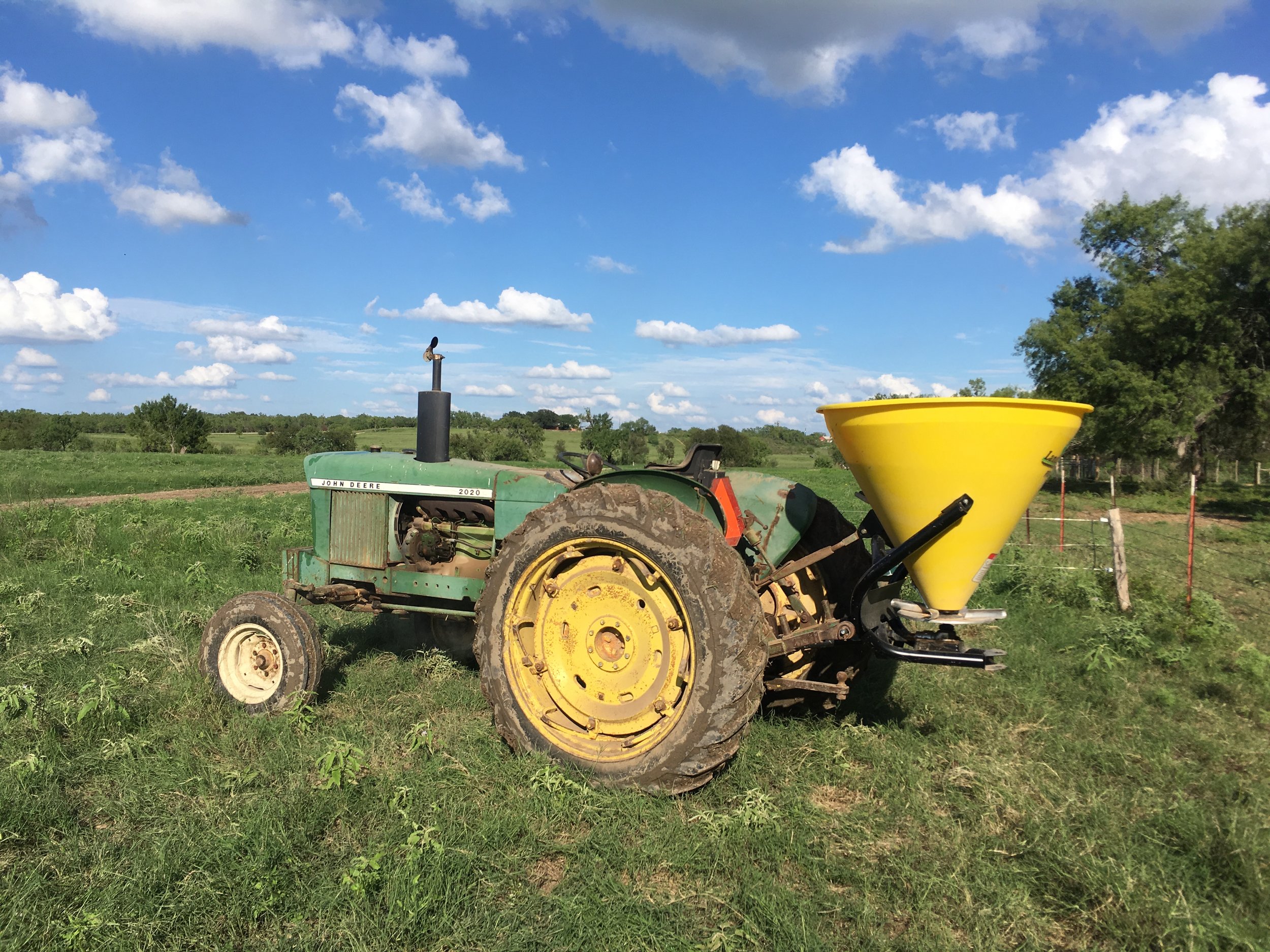


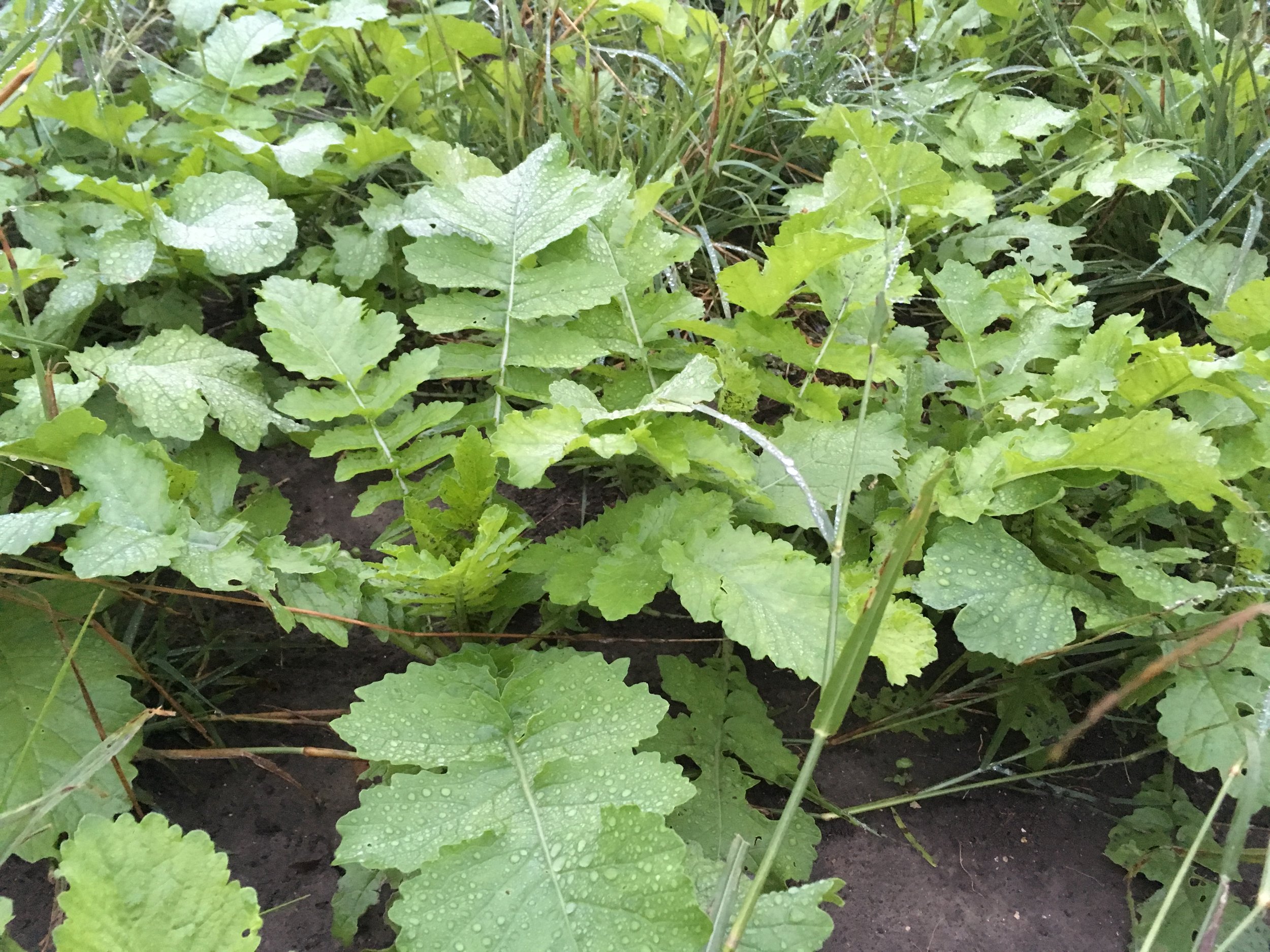
Cover cropping our perennial pastures during the Fall and Winter is another strategy for building soil and improving grazing. We have been experimenting with various mixes and applications for years. Our technique is very basic and cost effective. We begin our cover crop seeding around October 1. When the cattle are stocked at a high density in our perennial grass pastures we seed the cover crop using a broadcast seeder on the back of our old John Deere 2020. This tractor is light and maneuverable, which is perfect for driving across rough pastures seeding cover crops. We typically use a mix that consists of cereal grains, broad leaf forbs and nitrogen fixers. The mix we use varies with timing and rainfall, but one of our favorites is oats, ryegrass, daikon radish and arrowleaf clover. For our fall mixes we also use other varieties such as triticale, wheat, hubam clover, crimson clover and purple top turnips. For our summer mixes we primarily use nitrogen fixers such as lablab and iron/clay cowpeas.
Winter cover crops have greatly benefited our soil program by covering the soil with green vegetation during a time of the year when there is often a lack of it. Keeping the soil covered is important to soil health. During the summer it keeps the soil cool and moist. During the fall it maintains moisture when the dry wind is blowing 40 mph from the North. Cover cropping has also improved our grazing program substantially by filling in the “gaps” when our perennial pastures are dormant. This has allowed us to substantially reduce the need to feed hay.
Disclaimer: Once again it’s all about context. Use the seeds that are adapted to your climate and soils.
Leaky Weirs / Beaver Mimicry
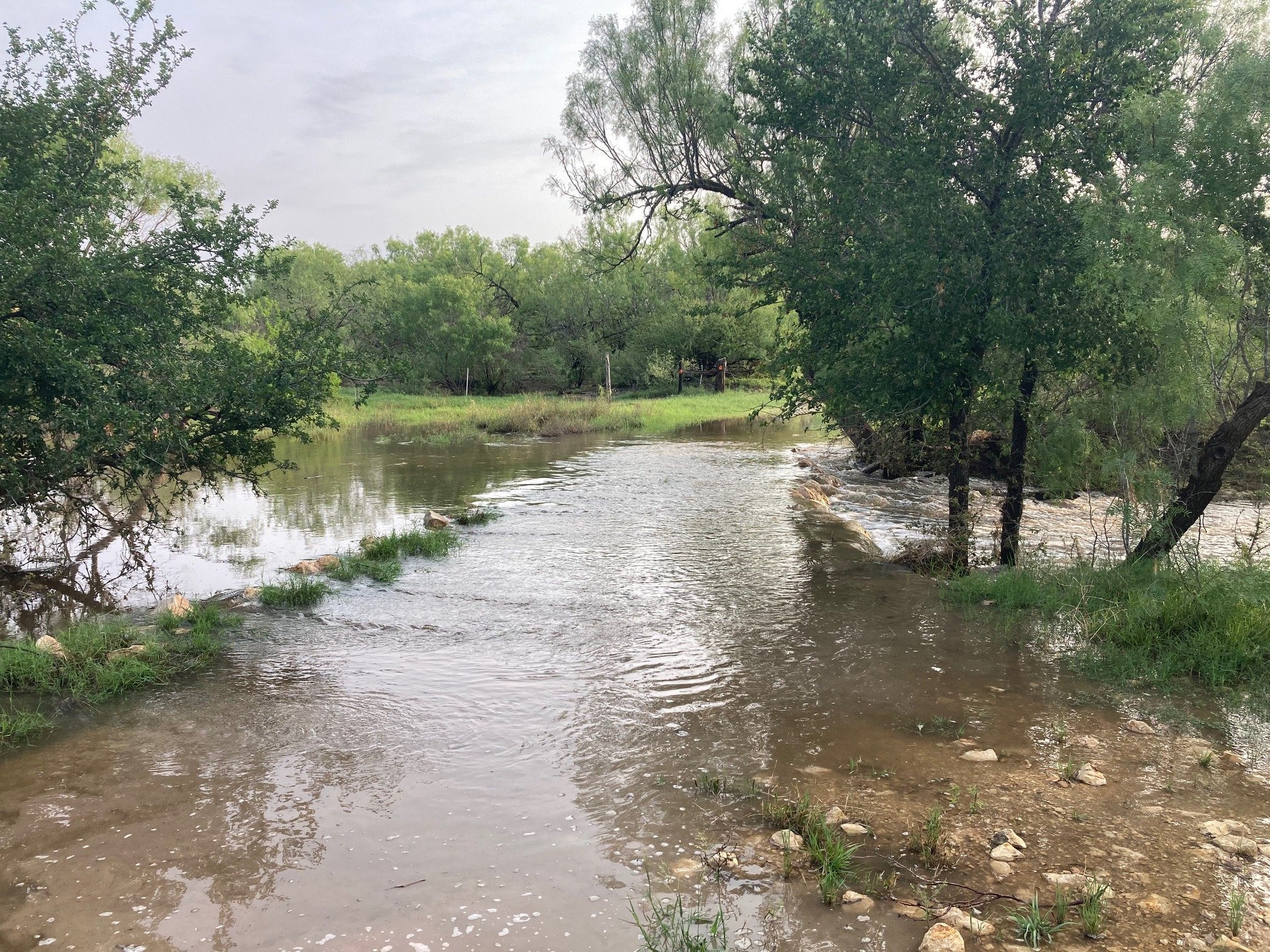
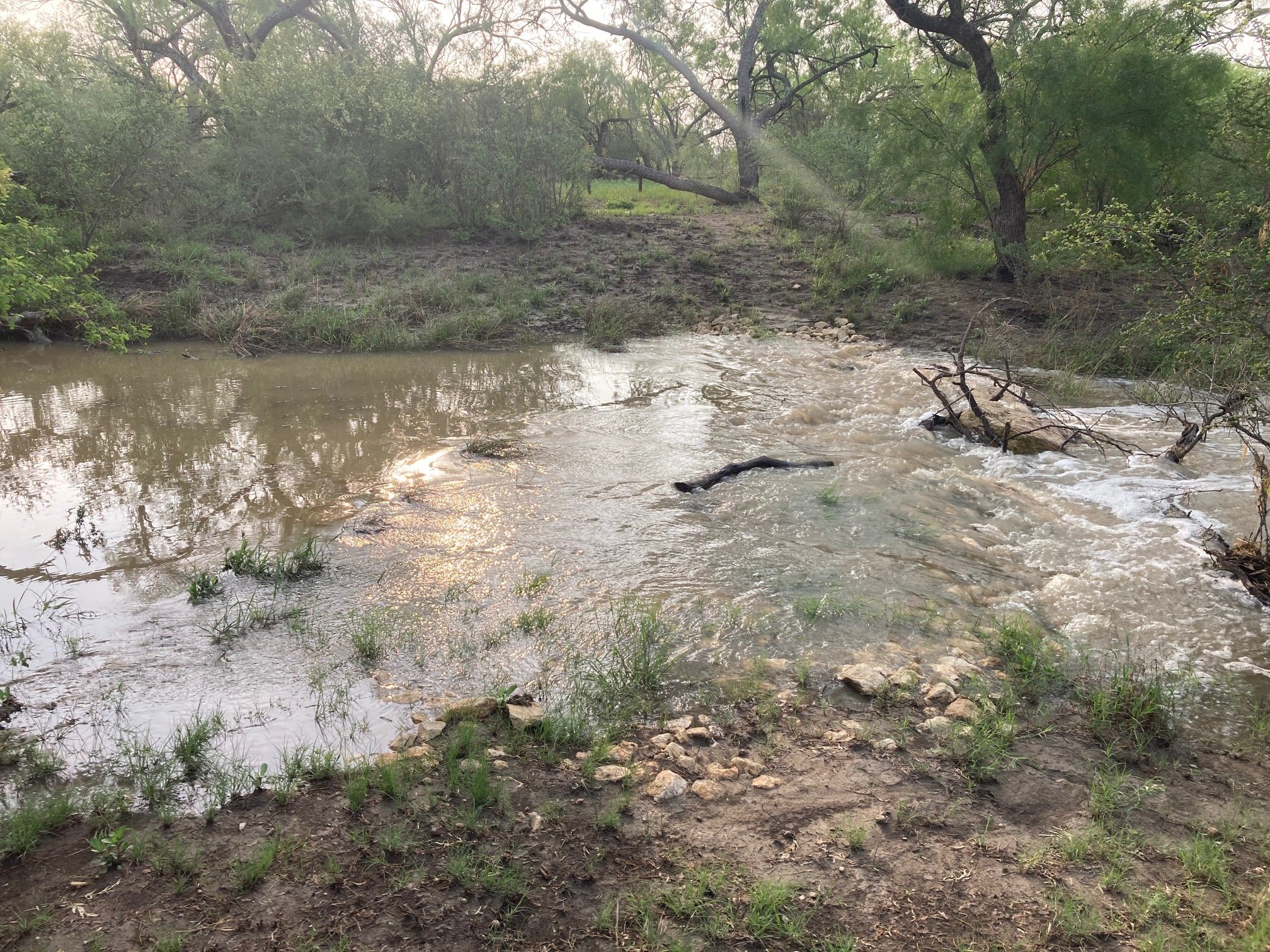
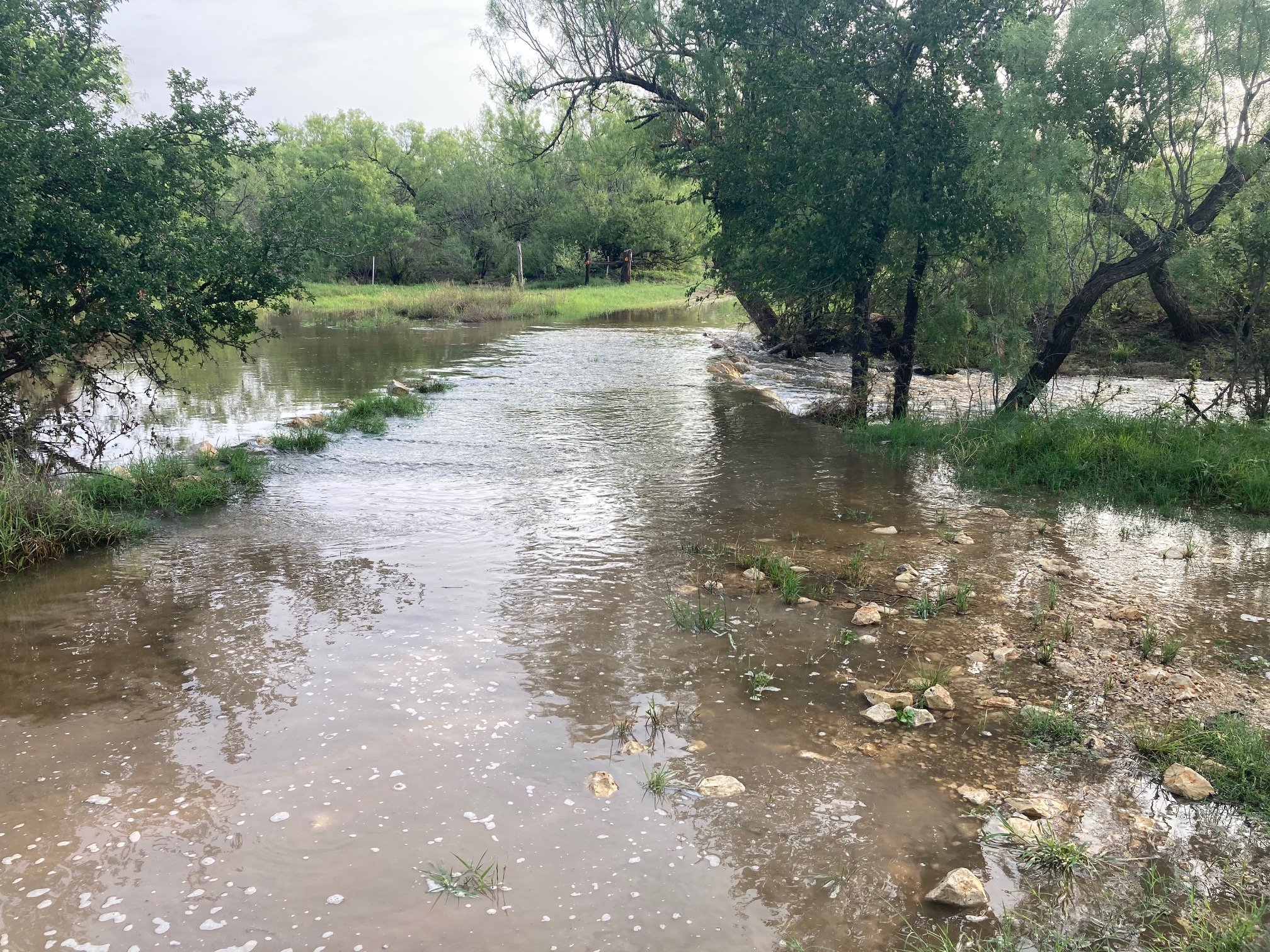

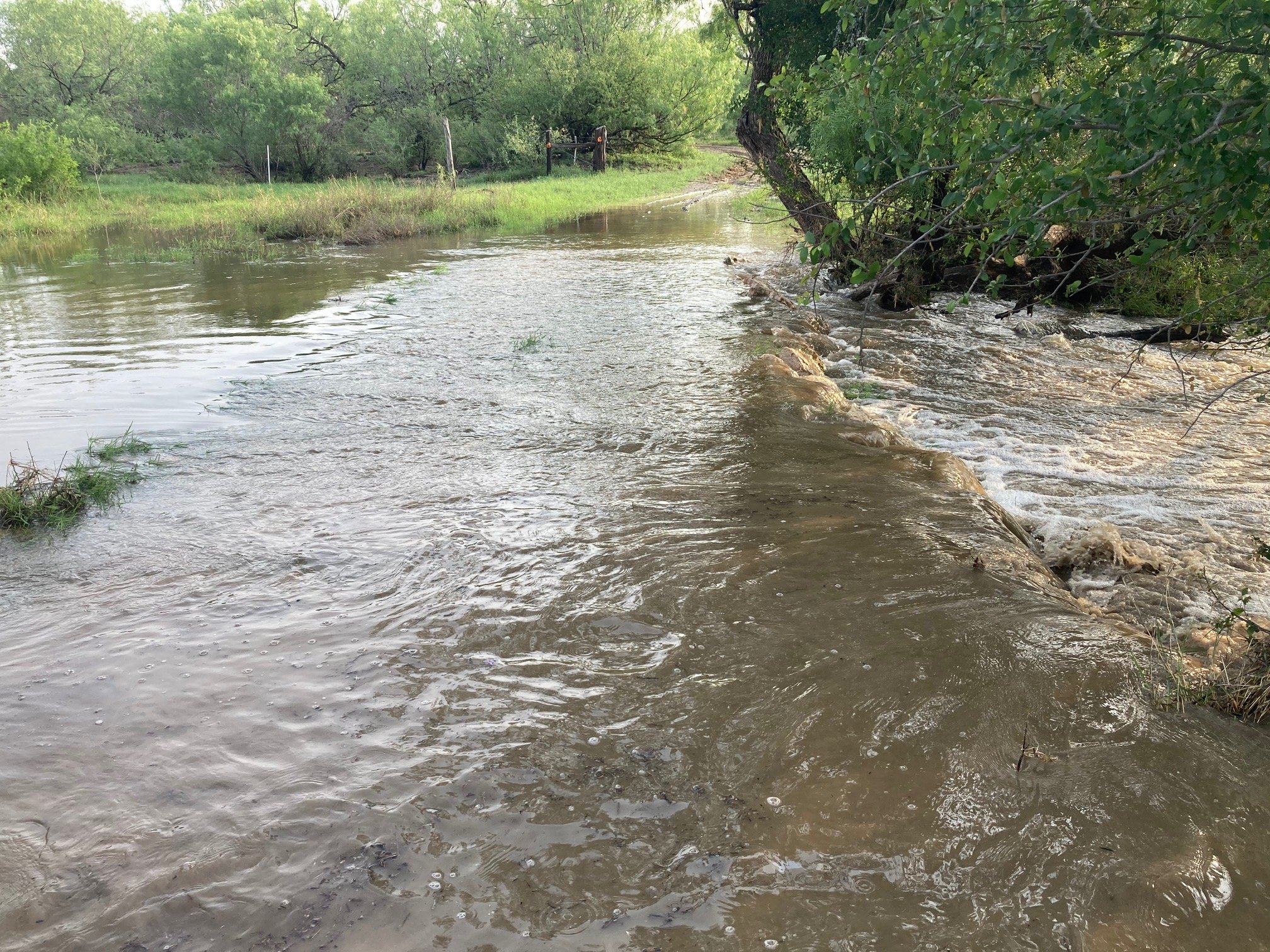
Fencing the creek was a first step in the right direction for regenerating the creek and the riparian zone. I have always been the type to walk outside during the rain and watch what the water does on the landscape. The most simple fact is that water flows downhill. In large rainfall events, once the water reaches a creek or channel it’s ultimately a mad dash towards the ocean (or a reservoir). The idea of a leaky weir is to slow and sink the water into the landscape surrounding the creek, often referred to as the riparian zone. Unlike a dam, which “stops” the water, a leaky weir allows it to slowly escape downstream. Typically during a large rainfall event our creek would only flow for a few days and then cease until the next rain event. I initially installed three leaky weirs in strategic locations on the creek. These locations are also utilized for crossing the creek from one side of our ranch to the other. Most of my life these were huge muddy pits that were often impassible. Thus, the leaky weir now served two purposes - slowing the water and enabling creek crossing with vehicles. To construct the leaky weirs I used a backhoe to place large boulders and had bull rock hauled in. The upper and lower side of the weir is padded with the large boulders or large recycled cement blocks to hold it together. The inner part of the weir is filled with bull rock and soil. I typically build mine about 20 feet wide and only a few feet tall, so there is plenty of room to move vehicles and farm equipment across them without trouble. After installing the weirs our creek can flow for weeks or even months after a large rainfall event. Slowly sinking the water into the surrounding riparian zone and slowly allowing the water to continue flowing down the creek. Leaky weirs are a simple, nature-based solution that should could lead to dramatic improvements for large-scale landscape regeneration.
Swales / Conservation Terraces
My regenerative journey began about 15 years ago with the study of permaculture. One of the popular practices in permaculture, especially in drylands, is the use of swales. A swale is a shallow ditch or depression in the landscape designed to capture, slow, and direct water to prevent erosion, improve soil moisture, and recharge groundwater. I simply wrote it off for many years because I believed that it required a significant investment in equipment and time. Though I learned recently that neither of those are the reality. I can’t tell you how many YouTube videos of swale building I have watched over the years, but I can tell you that I have envied the practice for a long time! I’ve only visited one site with large-scale swale implementation on the landscape. There simply aren’t many local examples that I am aware of, which has also kept me from implementing this practice. There are remnants of terraces throughout our area from the early 20th Century that were implemented as part of the Civilian Conservation Corps during the Great Depression.
As with many practices, the best way to learn is to do it! We recently built about a mile of swales and have plans to build many more. Our swales are built on contour with the goal of spreading and sinking the rain. The focus is on areas of the ranch where we continue to see the land degrading and other practices have not yielded results. These areas need some extra help and my intuition tells me this might just be the answer. I will follow up the construction with mulch and seeding/planting. More to come on swales as I continue to make observations.
Fencing & Restoring Riparian Zones
The years between 2010 and 2012 were the driest on record for Medina County, Texas. The first picture below is the bridge crossing over Parker Creek near our ranch. It was taken in the winter of 2010-2011. At that time it was the lowest anyone alive had seen our spring-fed waterhole. My father had just sold off the last of our cattle, but the damage was already done. He did the age old practice of opening all the gates when it gets really dry, which is one of the worst things you can do. When I moved back in 2010 the ranch was subdivided into just three pastures and there wasn’t much thought to the rotation. The water cycle was broken and the land was in a state of suffering from the lack of management. Riparian areas are especially sensitive and prone to destructive livestock management practices. Livestock prefer many of the species that grow within riparian areas, even so that we often refer to them as “ice cream plants.” Livestock also prefer to camp out or lounge around drinking water areas. You can easily imagine how a beautiful riparian area can quickly get destroyed by a hundred hungry cows and their heavy hooves.
I quickly realized that this was an opportunity to do things different. I had read about riparian restoration at Texas A&M University while studying Wildlife & Fisheries Sciences. In fact, I had fenced off our pond on the hilltop from livestock when I was a teenager. After attending the Bobwhite Brigade I realized how critical riparian habitats were for wildlife. The experience encouraged me to experiment with livestock exclusions around ponds. For some reason, I didn’t give much thought to the creek at that time. That all changed when the drought came in 2010 and the creek dried up. I had never seen it in that condition in my lifetime. It was heartbreaking to watch it dry up and cease to flow. That creek was the soul of this land and that soul was dying. After learning about AMP grazing and doing some research on stream restoration I decided to fence the creek and began planting native trees on the banks (see third picture on the right). With reduced pressure from livestock and some tender loving care the creek began to regenerate. This simple act lead to massive changes. The second picture below is that same bridge and water hole just a few years later. With a little help from Mother Nature in the form of rain the creek began the process of regeneration. Fencing off sensitive riparian areas can have dramatic positive effects on the landscape. A simple, cost-effective and low-impact method is utilizing single strand high-tensile electric fence. That’s all it takes - just a single wire can trigger regeneration.
Planting Native Grasses
When I moved back to the family ranch in 2010 we had one of the wettest years on record. It rained almost 45 inches here at the ranch. The pastures were so lush it was unbelievable. Then the drought of record in 2011-12 hit. The lush pastures became a distant memory as the livestock and wildlife consumed any vegetation that was holding on. Most of the so-called "improved" pastures looked like the Mojave Desert. The Klein Grass and Bermuda, both brought from Africa by the Extension Agency were hardly visible. There was simply bare soil. These non-native species didn't know how to survive the drought we were experiencing. Which grasses survived and thrived once the rains returned? You guessed it, the native grasses? Primarily low-rainfall adapted natives such as Buffalo grass, Windmill grass and Sideoats grama.
I have some old documents written in the mid 1800's by my family. These letters were written to family still living in Alsace, where our family had immigrated from in 1846. One of the letters more or less describes them establishing a homestead on a hill top surrounded by prairies and running streams. Most of the ranch is now brush country mixed with large, bull mesquite trees. The early ranchers grazed this country until there wasn't any grass left. Overgrazing gave the brush and trees the opportunity to encroach on land that was previously occupied by grass and forbs (prairie). In the world of grass, brush and trees there is a constant battle for sunlight. Whoever wins gets to grow in that spot. Some of you may argue that the prairie was maintained by fire, but recent anthropological research says otherwise. The Native Americans would use fire to burn the prairies to attract wildlife, such as the great herds of bison and antelope. It made hunting them for food significantly easier. There were certainly natural fires, but most likely they were infrequent. Evidence is pointing more and more towards the hooved ungulates for maintaining the once vast prairie ecosystem. Bison were almost hunted to extinction, Native Americans were methodically killed or moved, and the prairie was settled by early pioneers such as my family. Little did they know what the consequences of their actions would be hundreds of years later. I'm not trying to get political, just stating the facts.
Native grasses are important for three reasons - 1) Conservation - exotic/introduced species can push our natives and the wildlife that depends on them. 2) Natives require less rainfall and no fertilizer. They are deep rooted once established and have a symbiotic relationship with the microbes and fungi in the our soil. 3) It's a choice for future - interdependence of all life depends on a natural and balanced ecology. Natives are the basis for this which feeds us, cleans our air and cleans our water.
As you may envision native grasses fit perfectly into the equation. Over the years we have planted over 75 acres of native prairie. Native grass restoration can be expensive and often unnecessary (if you have a strong existing seed bank). It takes careful planning and timing to ensure success.


